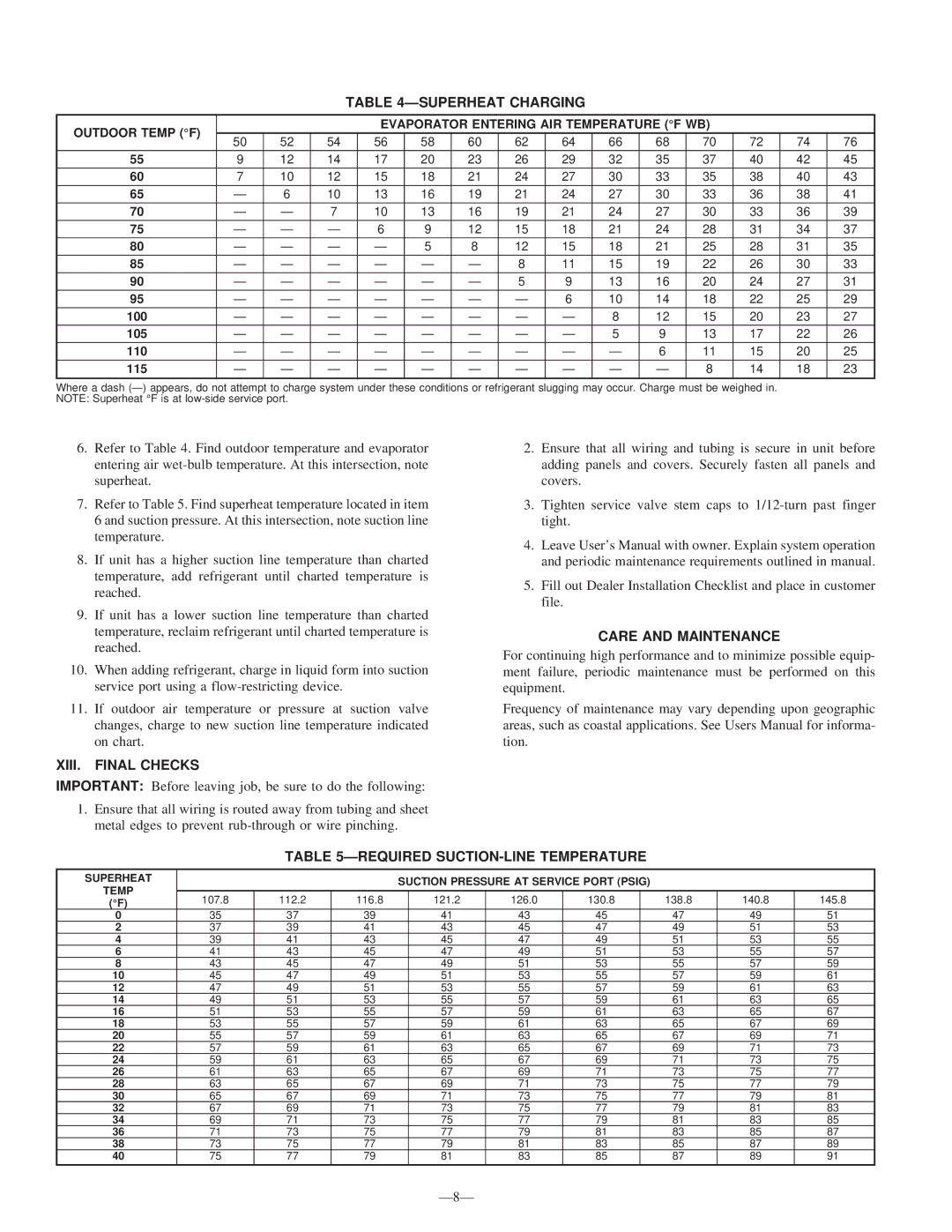591B specifications
The Bryant 591B is a high-efficiency gas furnace designed to deliver comfort, reliability, and energy savings to homeowners. It stands out in the market for its advanced features and innovative technologies, making it a preferred choice for many.One of the key features of the Bryant 591B is its two-stage heating capability. This technology allows the furnace to operate at a lower capacity during milder conditions, leading to improved fuel efficiency and consistent comfort levels. When the temperature drops significantly, the furnace shifts to its higher capacity, ensuring your home remains warm and cozy even in extreme weather.
The furnace is equipped with a variable-speed blower motor. This advanced motor allows for quieter operation and enhanced airflow throughout the home. With the ability to adjust speed based on the heating requirements, it not only contributes to better temperature consistency but also improves indoor air quality by facilitating increased filtration cycles.
In terms of energy efficiency, the Bryant 591B has impressive AFUE (Annual Fuel Utilization Efficiency) ratings, which can reach up to 95%. This translates to substantial savings on energy bills, making it an eco-friendly choice as well. The higher the AFUE rating, the more efficient the furnace is at converting fuel into heat, and Bryant has engineered this unit to perform at the top of its class.
Another significant characteristic is the furnace's compatibility with the Bryant Housewise thermostat. This smart thermostat provides users with enhanced control over their home heating, allowing for customized scheduling and remote access. This technology helps optimize energy usage while maintaining comfort, ensuring that you only heat your space when needed.
Additionally, the 591B is designed with a durable cabinet that minimizes noise and enhances performance. Insulated for sound, this furnace operates quietly in the background without disrupting daily life. Furthermore, its compact design allows for ease of installation in tight spaces, making it suitable for various home configurations.
Overall, the Bryant 591B offers a blend of efficiency, technology, and innovative features. Its two-stage heating, variable-speed blower motor, high AFUE ratings, and compatibility with smart thermostats provide both homeowners and contractors with an advanced heating solution that prioritizes comfort, efficiency, and user convenience. With the Bryant 591B, you can expect reliable warmth throughout the winter months while enjoying lower energy costs and a decreased environmental footprint.

